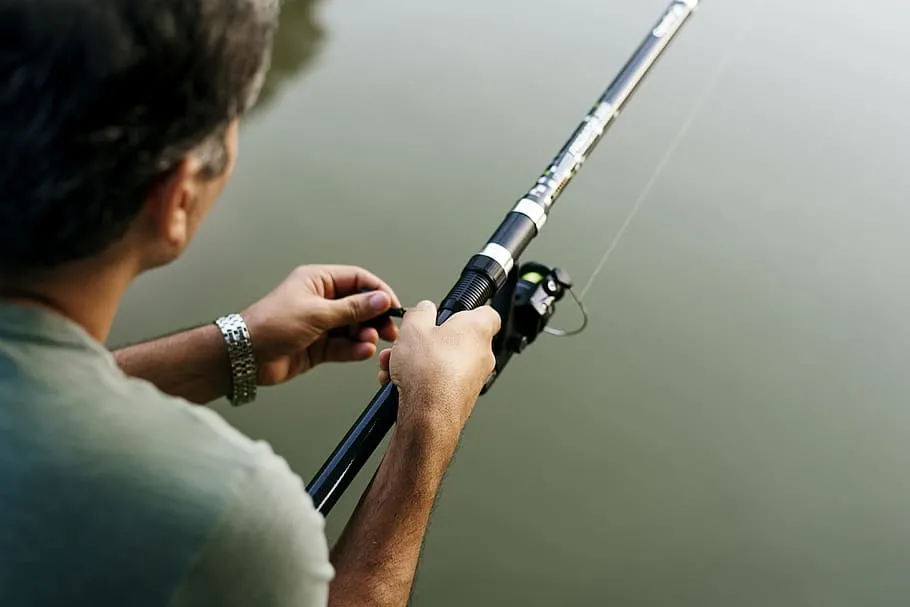So, you want to learn how to tie a high low fishing rig? Well, you’ve come to the right place. We’re diving into the nitty-gritty of this essential fishing technique. From its historical significance to step-by-step instructions, we’ve got your back.
Whether you’re a seasoned angler or just starting out, mastering this rig can be a game-changer in reeling in those big catches. So, let’s roll up our sleeves and get ready to tackle this together.
Table of Contents
ToggleHigh Low Rig Essentials
Versatile Fishing Setup
The high low rig is a versatile and effective fishing setup. It consists of two or more hooks positioned above the sinker. This configuration allows us to target multiple fish species simultaneously, increasing our chances of success.
For example, when fishing for different types of bottom-dwelling fish like flounder and sea bass, we can use this rig with baited hooks at varying heights to attract both species at once.
This setup also enables us to experiment with different baits on each hook, catering to the preferences of various fish species in the area. By using this strategy, we can determine which bait is most effective for a specific type of fish without having to constantly re-rig our lines.
The high low rig provides an advantage when dealing with finicky or cautious fish that may be hesitant to bite. The ability to present multiple baits at different depths increases our chances of enticing these elusive targets into striking.
The High Low Rig

When fishing in various environments, the high low rig offers several advantages that can significantly increase our chances of catching fish. This rig allows us to present different baits at varying depths, catering to the preferences of a wide range of fish species. By using this technique, we are more likely to attract a diverse selection of fish, ultimately enhancing our success rate.
The versatility of the high low rig is one of its main advantages. It enables us to target multiple species simultaneously by presenting different baits at various depths.
For example, while fishing for flounder near the ocean floor with one baited hook, we can also attract mackerel swimming closer to the surface with another hook on the same line. This increases our opportunities for successful catches and adds an element of excitement to our fishing experience.
Tying the “T” Knot
Preparation
It’s important to be prepared. We all know that tangles can occur when using multiple hooks on the same line, so we need to make sure we have everything ready before we start. Also, keep in mind that casting distance may be slightly reduced due to the additional weight of the rig.
This means we might need to adjust our casting technique a bit. And for those of us who are new to this, let’s not forget that beginners may find it challenging to tie and manage the high low rig. But don’t worry, with some practice and patience, we’ll get there!
One thing we should do is gather all necessary equipment before starting. This includes hooks, swivels, sinkers, and leader material. It’s crucial to choose the appropriate hook sizes and weights based on our target species as well. Once we have everything ready, familiarizing ourselves with the steps involved in tying the high low rig will make things much easier for us.
Step-by-Step Guide
First off, let’s ensure that we have enough space and light while working through each step of tying our high low fishing rig. Then carefully follow these steps:
- Attach a sinker at one end of your mainline.
- Tie a loop knot about 12 inches above the first sinker.
- Add another sinker below this loop knot.
- Tie two dropper loops onto your leader line.
- Connect one end of each dropper loop directly above or below each other.
Remember – practice makes perfect! Don’t be discouraged if it takes a few tries;
High Low Rig for Specific Fish
Sheepshead
When targeting sheepshead, we start by attaching a swivel to our mainline using a reliable knot. We then tie a length of leader material to each eye of the swivel, leaving enough space between them. Next, we attach hooks to each leader using trustworthy knots such as the improved clinch knot.
The high low rig is particularly effective for catching sheepshead due to its versatility and ability to present multiple baits simultaneously. To optimize our chances of success, we use small hooks and natural baits like fiddler crabs or shrimp. Positioning one hook closer to the bottom allows us to target sheepshead feeding near structures more effectively.
Snapper
In pursuit of snapper, we find that the high low rig can be used in various depths with great success. Opting for larger hooks and live or cut bait helps attract snapper effectively. By experimenting with different hook placements, we are able to find the most successful configuration based on our specific fishing location and conditions.
Utilizing this rig has allowed us not only to catch more fish but also provided an opportunity for experimentation and learning about what works best in different scenarios.
Tutorial Video Benefits
Visual Learning
Watching tutorial videos can be incredibly helpful. We get to see the step-by-step process visually, making it easier for us to understand and remember each stage. For instance, on platforms like YouTube, we can find numerous instructional videos demonstrating the exact techniques required for tying a high low rig.
These visual demonstrations provide clarity that written instructions might not offer. We get a clear view of how each knot is tied and where each component should be placed. This makes it easier for us to replicate the process when we’re out on the water trying to set up our rigs.
Technique Refinement
After watching these tutorials, practicing tying the high low rig becomes crucial in refining our technique. By experimenting with different hook sizes, leader lengths, and bait combinations, we learn what works best for specific types of fish or fishing conditions.
Not only does this help us refine our skills but also allows us to adapt our approach based on various factors such as water depth or target species.
Moreover, paying attention to details such as knot strength and bait presentation can significantly impact our success rate while fishing with a high low rig. By focusing on these finer points during practice sessions, we improve both speed and efficiency in setting up our rigs when out angling.
Time Efficiency on Water
Pre-Tying Rigs
We can save valuable time on the water by pre-tying multiple rigs before our fishing trip. By doing this, we ensure that we have a good supply of rigs ready for action. Storing them in separate ziplock bags allows us to access them easily and keeps everything organized. Moreover, labeling each bag with the target species or preferred bait enables quick identification.
For example, if we plan to catch different types of fish during our trip, such as flounder or sea bass, having pre-tied rigs labeled accordingly will help us switch between setups swiftly. It’s like having a well-organized toolbox – everything is readily available when needed.
On-the-Spot Adjustments
Being prepared to adjust our high low rig based on changing fishing conditions is crucial for success. Sometimes, the fish may respond better to a specific hook size or bait type than what we initially anticipated. Therefore, modifying hook sizes, leader lengths, or bait types on the spot can significantly increase our chances of catching more fish.
Imagine being out at sea and noticing that one particular type of bait is attracting more bites than another; being able to make quick adjustments means not missing out on potential catches.
Effective Rig Tying Tips
Knot Strength
When tying a high low fishing rig, we must prioritize knot strength. Each knot needs to be secure and reliable to avoid losing fish or breaking the rig. Before casting, it’s crucial to test the strength of each knot by applying gentle pressure. Weak knots can lead to lost opportunities and frustration on the water.
We’ve found that taking time to ensure our knots are strong pays off in successful catches. It’s disheartening when a poorly tied knot leads to a missed opportunity, so we always double-check our knots before casting out our lines.
Bait Presentation
One of the advantages of using a high low rig is its ability to present multiple baits at different depths naturally. To enhance bait presentation, consider using scent attractants or adding attractor beads above the hooks. Varying your retrieval speed mimics the movement of live prey, making your bait more enticing.
Joining the Angling Community

Learning Opportunities
When tying a high low fishing rig, we open doors to learning various fishing techniques. We get to explore different bait options, fishing locations, and target species. By continuously seeking knowledge and expanding our angling skills, we become more versatile anglers.
For example, when trying out a high low rig in freshwater lakes for bass fishing, we learn about the best bait choices for this specific type of fish. This experience teaches us how to adapt our rigging technique based on the conditions and the behavior of the target species.
Moreover, as we gain experience with high low rigs, it’s essential to share our experiences with fellow anglers. We can join online fishing communities or participate in local fishing clubs where we engage in discussions and exchange tips for a more enriching fishing journey.
Sharing Experiences
By sharing our high low rig experiences with others who have similar interests, we create opportunities for mutual learning. It’s through these exchanges that we pick up valuable insights from seasoned anglers while also contributing our own unique perspectives.
Joining an online community allows us to connect with anglers from around the world who have diverse experiences and expertise in different types of angling. This exposure broadens our understanding of various techniques and helps us stay updated on new developments in angling equipment and strategies.
Conclusion
Tying a high low fishing rig involves several key steps. First, we start by attaching the sinker to the end of the mainline. Then, we tie two dropper loops above the sinker to create space for our hooks. After that, we attach our hooks to each dropper loop using improved clinch knots.
Practicing and refining your technique is crucial when learning how to tie a high low rig. It’s essential to ensure that all knots are secure and properly tied. We must also pay attention to maintaining an equal distance between the hooks and ensuring they are perfectly aligned.
Experimentation is key. For example, if we’re targeting different fish species or fishing in varying water conditions, adjusting hook sizes or changing leader lengths can make a significant difference in our success rate.
It’s important for us as anglers not only to follow these steps but also practice them regularly until tying a high low rig becomes second nature.
